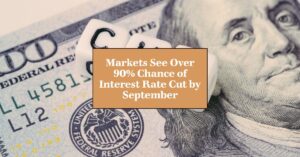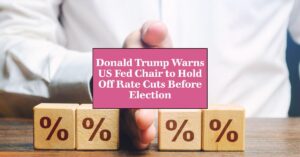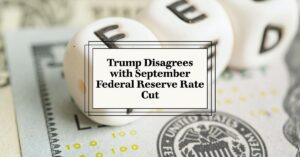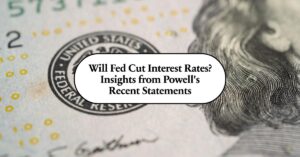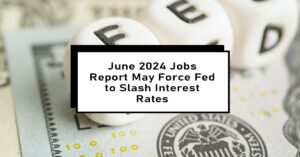As we gear up for next week’s significant Federal Reserve meeting on July 31, 2024, the question many are asking is: What to expect on interest rates? With a mixture of cautious optimism and lingering uncertainty filling the air, the outcomes from the Federal Open Market Committee (FOMC) could drastically shape the economic landscape for consumers, businesses, and market participants.
In particular, how the Fed addresses current inflation trends, job market conditions, and global economic challenges will be pivotal. Given the Fed's crucial role in shaping U.S. monetary policy, understanding the nuances of this meeting offers vital insights into planning personal finances and investment strategies.
Fed's Upcoming July Meeting: Will Interest Rates Fall or Stay Put?
The Current Economic Context
As it stands, the Federal Reserve has maintained its key interest rate at a striking 23-year high—between 5.25%-5.50%—for an extended period, marking an essential departure from the near-zero interest rates that prevailed during the pandemic.
The Fed raised rates in response to a post-pandemic surge in inflation that peaked at a staggering rate of 7.1%. However, over the past year, the central bank has begun to see inflation moderate, recently clocking in at approximately 2.5% as per the Personal Consumption Expenditures (PCE) index.
One cannot overlook the significant factors influencing the Fed's decision-making process. While inflation has moderated, the job market has shown signs of slowing. Unemployment rates have crept up to 4.1%—a notable increase from last year's 50-year low of 3.4%.
According to a recent analysis by Moody's Analytics economist Justin Begley, the Fed is now faced with the challenging task of balancing its dual mandate: maintaining price stability while promoting maximum employment.
Fed Signals for Future Rate Cuts
Here's where it gets interesting. The market anticipates that the Fed will keep rates steady at the upcoming meeting, while they openly begin discussions about potential rate cuts in September. This expected pivot signifies a major shift from previous months, wherein the Fed's focus was squarely on combating inflation.
Michael Gapen, the chief U.S. economist at Bank of America Securities, speculated on this forthcoming transition, stating, “The Fed is optimistic that cuts are likely in the near term, but we do not think it is willing to signal September is a done deal.”
This sentiment resonates with market expectations, where investors are eyeing the September meeting as a critical point for potential easing in interest rates. Many financial analysts forecasted that a series of rate cuts could start as early as next month, contingent on forthcoming economic data.
The Importance of Communication
While decisions surrounding interest rates are often couched in metrics and statistics, the Fed's communication strategy is equally crucial. Past Federal Reserve meetings have shown us just how impactful the language used by Jerome Powell and other officials can be in shaping market sentiment. During the briefings, Powell's articulated views on inflation, growth, and employment have resulted in noticeable shifts in investor behavior.
Investors are not just looking for concrete measures but also cues about the Fed’s mindset and reasoning behind its policy choices. Any shift in language to suggest the need for imminent cuts would likely send ripples through the market. Observers are particularly keen on Powell's upcoming remarks, as they could clarify how the Fed plans to manage inflation pressures while supporting a labor market that shows signs of fatigue.
What Happens If Rates Remain Unchanged?
Should the Federal Reserve choose to maintain its current interest rate during next week’s meeting, the focus will undoubtedly pivot towards the implications for the economy's trajectory. The potential for a September rate cut would remain a prominent topic of discussion among economists, financial analysts, and the media.
According to Bernstein, a member of the Council of Economic Advisers, maintaining the current rates could have adverse effects on job creation and consumer spending. If the job market continues to soften, high-interest rates could further curtail consumer confidence, lead to reduced spending, and stifle overall economic growth. Thus, herein lies the challenge for the Fed: how to navigate the fine line between sustaining inflation control and fostering a robust labor market.
The Risks and Benefits of Rate Cuts
If the Fed ultimately decides to cut rates in September, this could signal a significant shift in monetary policy, not seen since the onset of the pandemic in 2020. Cuts would serve as a recognition of economic vulnerability but could revitalize growth and investment, particularly for sectors that rely heavily on borrowing, such as real estate and consumer financing.
However, the decision to reduce rates is not without risks. Analysts such as Bill Dudley, former vice chairman of the Fed, have pointed out that delaying rate cuts could push the economy into a recession. Dudley emphasized the self-reinforcing cycle of a weakening job market, stating, “When jobs are harder to find, households trim spending, the economy weakens and businesses reduce investment, which leads to layoffs and further spending cuts.” Thus, the Fed's ability to forecast these outcomes accurately will be critical in its decision-making process.
Conclusion: A Look Ahead
As we anticipate the Federal Reserve's July meeting, the stakes are high for millions of Americans whose financial well-being hinges on the decisions made by the FOMC. Whether rates hold steady or begin a gradual decline, it signals where the economy is headed—toward expansion or uncertainty.
In the broader context, global economic factors, domestic conditions, and geopolitical risks will also play vital roles in shaping the Fed's decisions. Inflation rates, employment figures, geopolitical tensions, and international economic performance will all weigh heavily on how the Federal Reserve navigates this complex terrain.
Ultimately, next week’s meeting will not just illuminate the Federal Reserve’s current stance but will also set expectations for the economic climate in the months to come. For consumers and investors alike, remaining informed and prepared for any changes will be essential in maneuvering through this ever-evolving economic landscape.
Stay tuned as the world observes how the Fed’s decisions will unfold, shedding light on what it all means for individuals navigating financial decisions amid swirling economic currents.
ALSO READ:
- Interest Rate Predictions for the Next 3 Years: (2024-2026)
- Interest Rate Predictions for Next 2 Years: Expert Forecast
- Interest Rate Predictions for Next 10 Years: Long-Term Outlook
- When is the Next Fed Meeting on Interest Rates in 2024?
- Interest Rate Cuts: Citi vs. JP Morgan – Who is Right on Predictions?
- More Predictions Point Towards Higher for Longer Interest Rates



